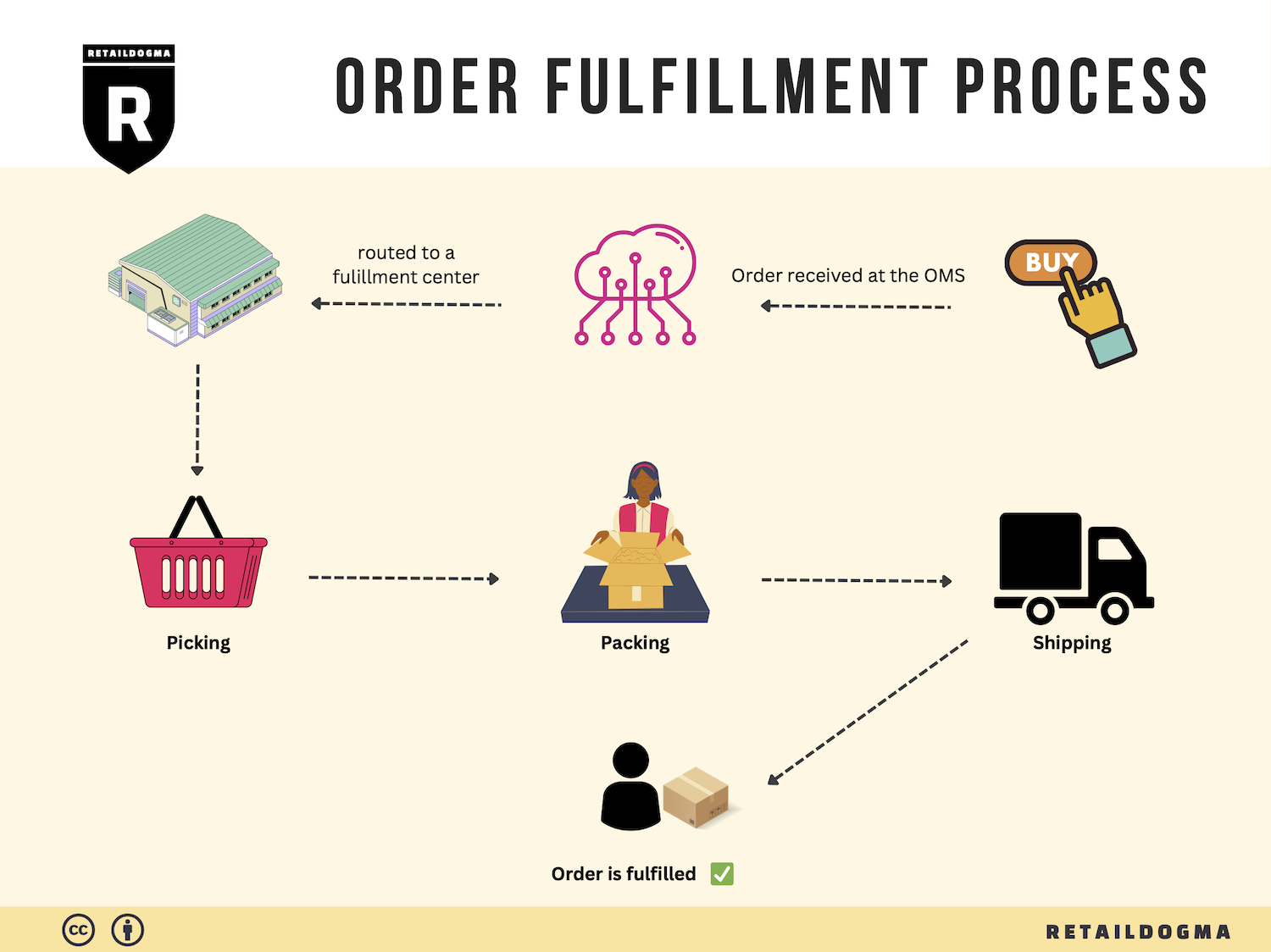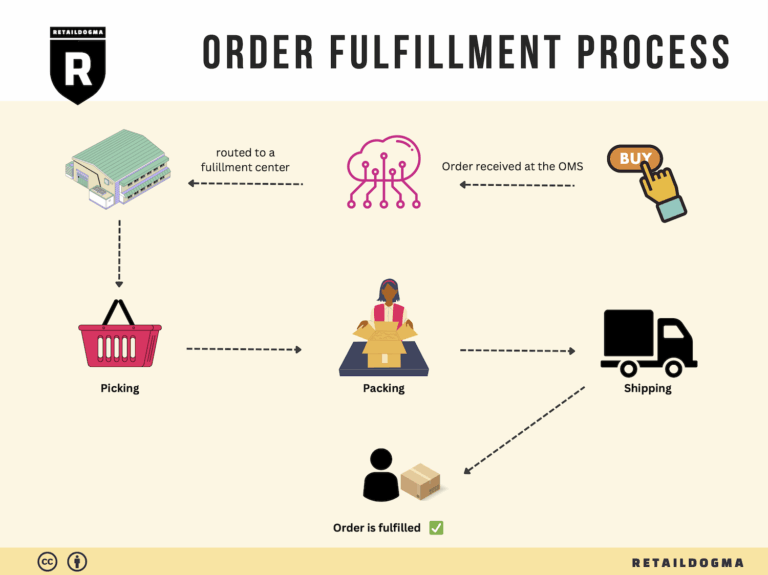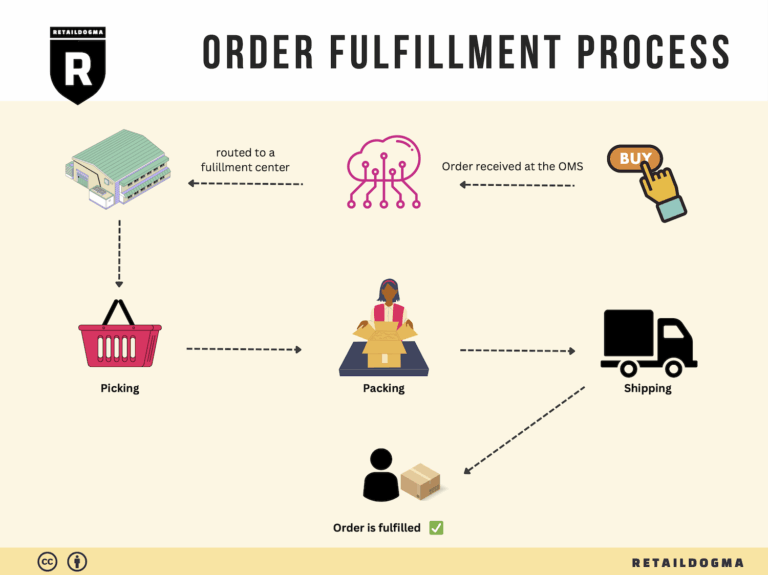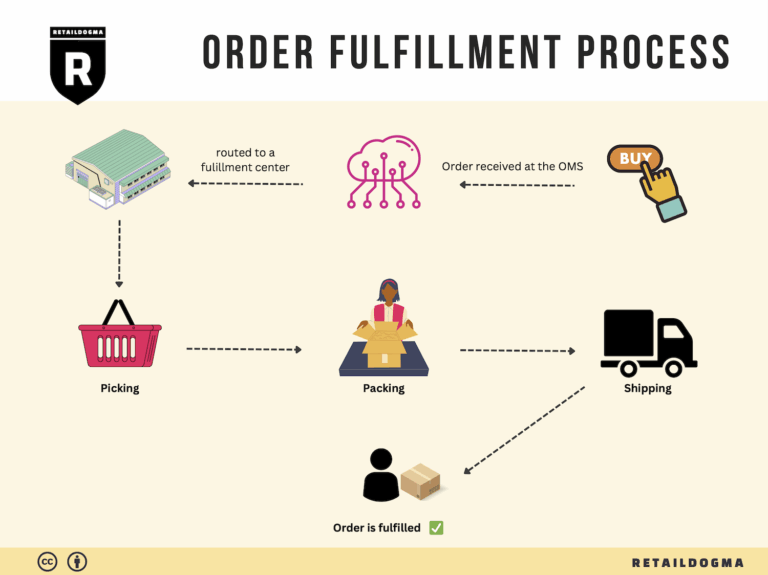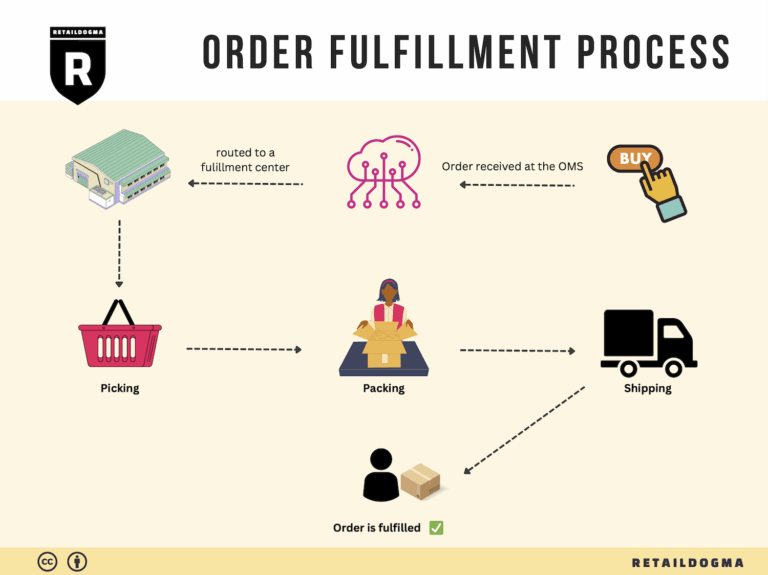Ecommerce Fulfillment Services: The Ultimate Guide (2025)
What is E-commerce Fulfillment? An Introduction for Growing Businesses
Understanding the Fulfillment Challenge
For many growing e-commerce businesses, the excitement of scaling operations can quickly turn into a daunting challenge when it comes to packing and shipping orders. As sales begin to climb, so too do the complexities of ensuring that each product reaches its destination on time and in perfect condition. This often leads to feelings of being overwhelmed, where the logistics of order fulfillment become an additional burden rather than a streamlined process that supports growth.
At its core, e-commerce fulfillment is simply the process of getting a product from your warehouse to your customer’s doorstep. This journey begins the moment a customer clicks “buy” and extends to the moment they receive their purchase. It encompasses various critical steps, including inventory management, order processing, shipping, and handling returns. For businesses looking to scale, understanding and optimizing this process is crucial.
What This Guide Will Cover
In this guide, we will explore the different fulfillment models available to e-commerce businesses, including Third-Party Logistics (3PL) and Fulfillment by Amazon (FBA). Each model comes with its own set of advantages and challenges, and knowing which one aligns best with your business goals is essential for growth.
We will delve into the core services provided by fulfillment partners, such as warehousing, pick and pack operations, and transportation management. These services are the backbone of an effective fulfillment strategy, enabling businesses to deliver products efficiently while minimizing costs.
Choosing the right fulfillment partner can be a game-changer for your business. We’ll provide insights on what to look for in a fulfillment provider, including factors such as technology integration, service quality, and scalability. Additionally, we will discuss pricing structures, helping you understand how to evaluate costs and find a solution that fits your budget without compromising service quality.
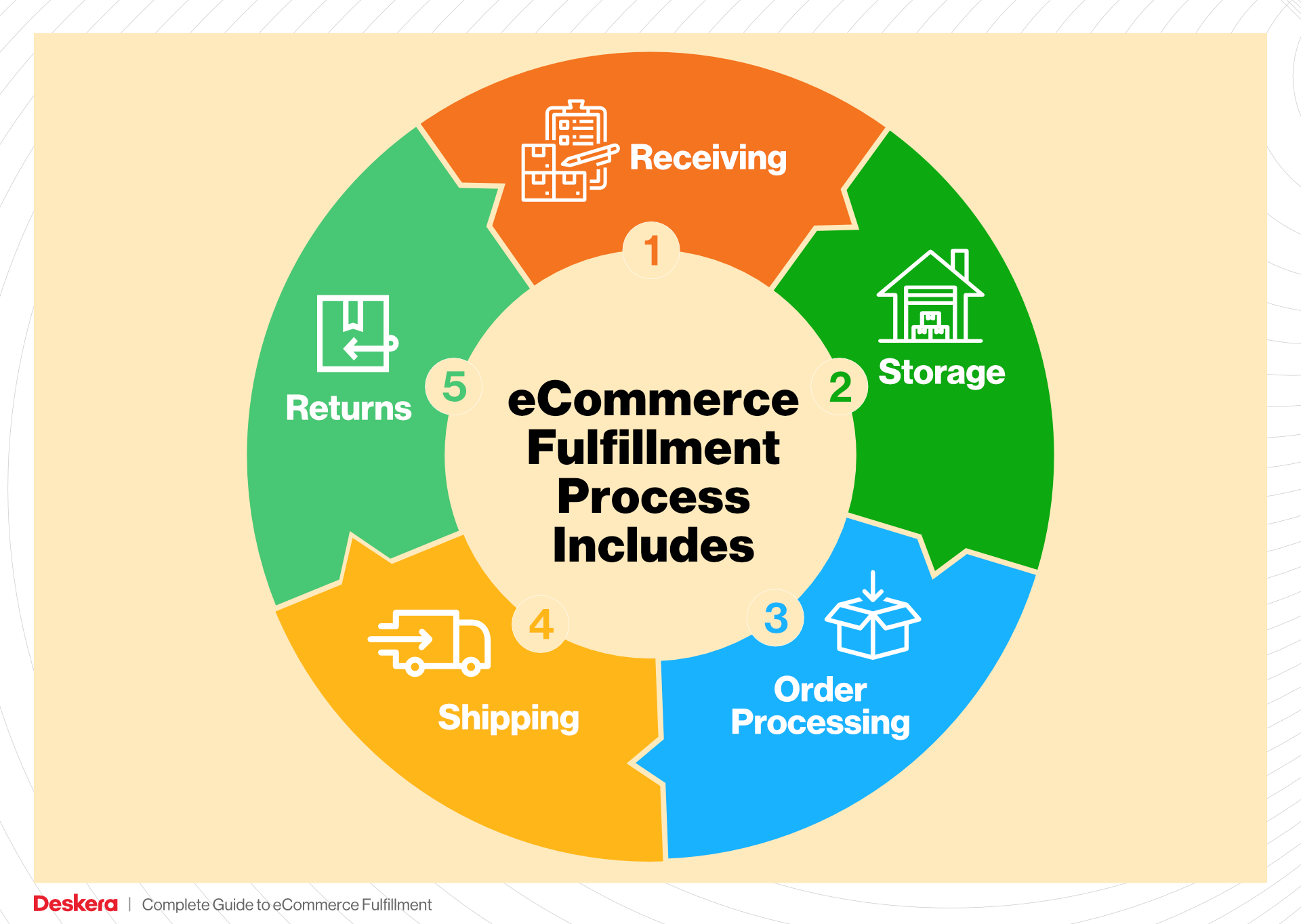
Empowering Smart Decisions
The ultimate goal of this guide is to empower e-commerce businesses to make informed decisions about their logistics and fulfillment strategies. By understanding the intricacies of fulfillment and the options available, you can streamline your operations, enhance customer satisfaction, and fuel your growth. With the right knowledge and tools at your disposal, you can transform fulfillment from a pain point into a competitive advantage, setting your business on a path to success.
What You’ll Learn In This Guide
- What is E-commerce Fulfillment? An Introduction for Growing Businesses
- The Order Fulfillment Process: From ‘Buy’ Button to Customer’s Door
- Comparing Fulfillment Models: In-House vs. 3PL vs. Dropshipping
- A Deep Dive into Amazon FBA: Pros, Cons, and Who It’s For
- Core Services Offered by Fulfillment Centers
- How to Choose a Fulfillment Partner: A 6-Point Checklist
- Understanding Fulfillment Pricing: A Breakdown of Common Fees
- Frequently Asked Questions (FAQs) about Fulfillment
- Conclusion: Is Outsourcing Fulfillment the Right Move for Your Business?
- Important Disclaimer
The Order Fulfillment Process: From ‘Buy’ Button to Customer’s Door
1. Receiving Inventory
The order fulfillment process begins with receiving inventory, which is critical for maintaining stock levels and ensuring product availability. Upon arrival, products are unloaded and checked against purchase orders to confirm accuracy, a process often referred to as goods receipt. This step includes inspecting items for damage and ensuring they meet quality standards.
Why is this step important? Accurate receiving prevents inventory discrepancies and ensures that your warehouse is stocked correctly, which is essential for fulfilling customer orders promptly. A common key term associated with this step is SKU (Stock Keeping Unit), which is a unique identifier for each product variant. Proper SKU management helps in tracking inventory levels and simplifies future order processing.
2. Warehouse Storage
Once inventory is received and verified, the next step is warehouse storage. This involves strategically placing products in designated storage areas, optimizing space while ensuring items are easily accessible. Efficient storage systems, often facilitated by advanced warehouse management software (WMS), help in organizing products based on various parameters such as size, weight, and demand frequency.
Why is warehouse storage crucial? Effective storage solutions minimize retrieval times, reduce labor costs, and enhance overall operational efficiency. Additionally, organized storage helps maintain inventory accuracy, which is vital for fulfilling orders correctly. Key concepts in this step include bin locations and inventory rotation (e.g., FIFO – First In, First Out), which ensure that older stock is sold first, reducing the risk of obsolescence.
3. Order Picking
Order picking is the process of selecting items from storage to fulfill customer orders. This step can vary in complexity depending on the size of the order and the layout of the warehouse. Common methods include single order picking, where one order is processed at a time, and batch picking, where multiple orders are picked simultaneously to improve efficiency.
The importance of order picking lies in its direct impact on order accuracy and fulfillment speed. Mistakes in this phase can lead to customer dissatisfaction and increased return rates. To streamline this process, businesses often utilize pick lists, which are generated from the order management system and guide workers on which items to retrieve and from where. Efficient picking strategies not only enhance productivity but also contribute to better customer experiences.
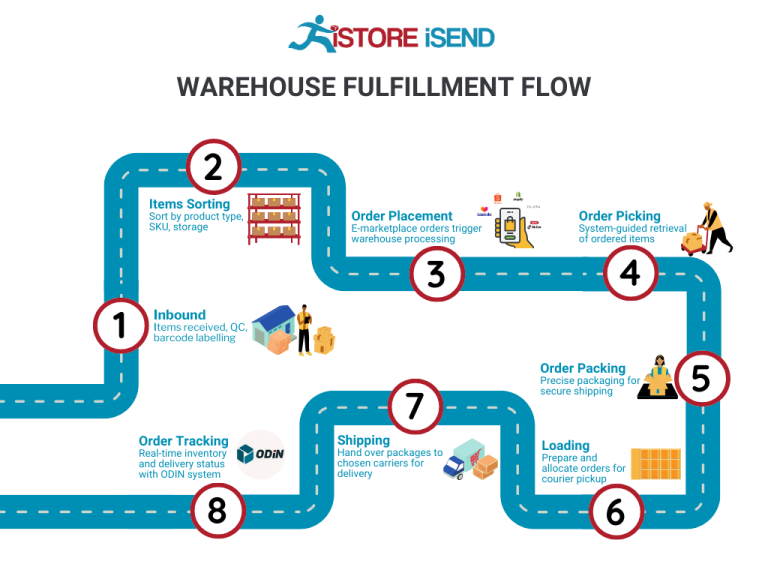
4. Order Packing
After items have been picked, the next step is order packing. This involves securely packaging products for shipment, ensuring they are protected during transit. Proper packing methods can include the use of bubble wrap, packing peanuts, and sturdy boxes. Additionally, companies may implement packing slips, which detail the contents of the package and provide essential information for both the customer and the shipping carrier.
Order packing is vital for several reasons: it safeguards products from damage, ensures compliance with shipping regulations, and enhances the customer’s unboxing experience. This step also allows for the inclusion of promotional materials or personalized messages, adding a touch of brand loyalty. The key term associated with this step is packaging compliance, which refers to adhering to specific guidelines for shipping fragile or hazardous materials.
5. Shipping & Delivery
The final step in the order fulfillment process is shipping and delivery. Once packages are packed, they are labeled and dispatched to the appropriate carriers for delivery. Businesses must choose reliable shipping partners and methods based on factors like cost, speed, and service quality. Technologies like tracking systems allow customers to monitor their orders in real-time, enhancing transparency and trust.
Why is shipping and delivery significant? This step can make or break the customer experience, as timely and accurate delivery is a critical component of customer satisfaction. Customers today expect fast shipping options, with many willing to pay extra for expedited services. Key terms relevant to this step include last-mile delivery, which refers to the final leg of the shipping journey, and shipping zones, which help determine shipping costs based on distance.
In conclusion, the order fulfillment process is a multi-faceted journey that requires careful attention to detail at each stage. By understanding and optimizing these five steps—receiving inventory, warehouse storage, order picking, order packing, and shipping & delivery—e-commerce businesses can streamline operations, reduce costs, and significantly enhance customer satisfaction.
Comparing Fulfillment Models: In-House vs. 3PL vs. Dropshipping
Fulfillment Models Overview
When choosing a fulfillment model for your e-commerce business, it’s crucial to understand the nuances of each approach. Below, we compare three primary models: In-House Fulfillment, Third-Party Logistics (3PL), and Dropshipping. Each has its own strengths and weaknesses, which can significantly impact your operational efficiency and customer satisfaction.
| Model | Who Handles Inventory | Best For (Business Stage) | Key Advantage | Key Disadvantage |
|---|---|---|---|---|
| In-House Fulfillment | The business itself | Startups to mid-sized businesses | Full control over inventory and processes | High overhead costs and resource demands |
| Third-Party Logistics (3PL) | A third-party provider | Growing businesses seeking scalability | Expertise and resources for logistics | Less control over inventory and processes |
| Dropshipping | Supplier or manufacturer | Startups and niche businesses | Low upfront investment and risk | Lower profit margins and reliance on suppliers |
In-House Fulfillment
In-house fulfillment refers to when a business manages its entire logistics process internally. This includes receiving inventory, warehousing, order processing, packing, and shipping. This model is particularly advantageous for businesses that want complete control over their operations. By handling everything in-house, businesses can ensure that their inventory management processes align perfectly with their brand standards and customer expectations.
However, managing fulfillment internally can lead to significant overhead costs, including warehousing, staffing, and technology investments. Additionally, as the business scales, these costs can become burdensome. The complexity of managing logistics can also divert focus from core business activities such as marketing and customer engagement. In-house fulfillment is best suited for startups to mid-sized businesses that have the resources to manage their logistics but may find it increasingly challenging as they grow.
Third-Party Logistics (3PL)
Third-party logistics (3PL) providers offer a comprehensive suite of logistics services, allowing businesses to outsource their fulfillment needs. 3PL companies handle everything from warehousing to transportation, leveraging their expertise and resources to streamline operations. This model is ideal for growing businesses that need to scale quickly without the burden of investing in their own logistics infrastructure.
One of the main advantages of using a 3PL provider is the access to specialized logistics technology and expertise, which can significantly enhance operational efficiency. Additionally, 3PLs often have established relationships with carriers, which can lead to better shipping rates and faster delivery times. However, partnering with a 3PL means relinquishing some control over inventory and fulfillment processes. Businesses must carefully select a reliable 3PL provider to ensure that their service levels align with customer expectations. This model is best suited for businesses in a growth phase that require scalability without the capital expenditure associated with in-house fulfillment.
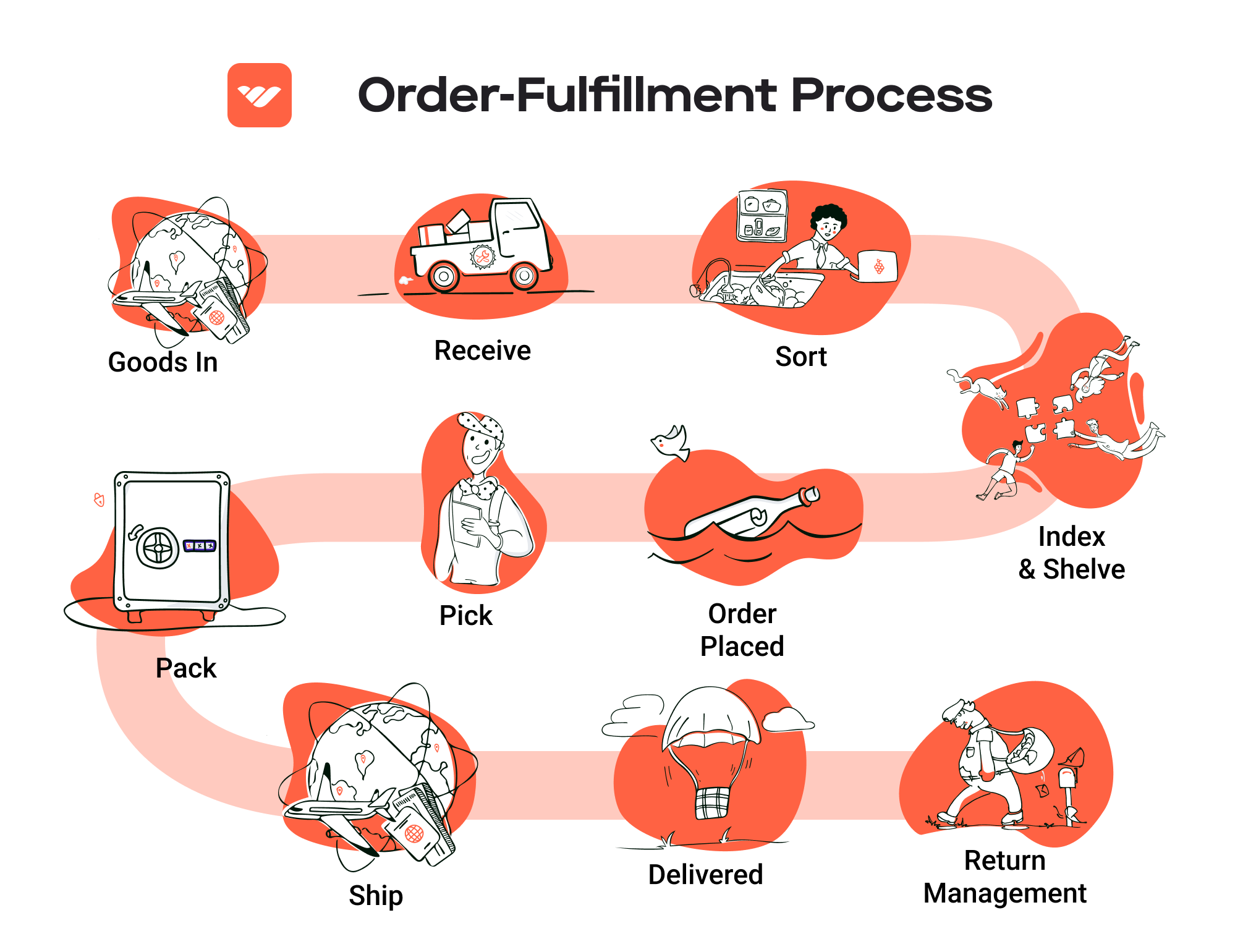
Dropshipping
Dropshipping is a fulfillment model where the retailer does not keep goods in stock. Instead, when a retailer sells a product, they purchase the item from a third-party supplier, who then ships it directly to the customer. This model has gained popularity, especially among startups and niche businesses, due to its low upfront investment and minimal financial risk.
The primary advantage of dropshipping is that it allows entrepreneurs to start an e-commerce business with minimal capital since they do not need to invest in inventory upfront. This flexibility enables businesses to offer a wider variety of products without the complexities of managing physical stock. However, dropshipping also comes with its own set of challenges. Profit margins are typically lower due to reliance on suppliers, and businesses may face issues with inventory management and quality control. Additionally, shipping times can be longer, which may affect customer satisfaction. Dropshipping is best suited for startups and niche businesses looking to test the market with minimal investment while being aware of the trade-offs in control and profitability.
Conclusion
Choosing the right fulfillment model is a critical decision for any e-commerce business. Each model—In-House Fulfillment, 3PL, and Dropshipping—offers distinct advantages and disadvantages that can influence your operational efficiency and customer satisfaction. By assessing your business stage, resource availability, and growth ambitions, you can select the model that best aligns with your strategic goals. Balancing cost, control, and customer experience will be key to scaling your e-commerce operations successfully.
A Deep Dive into Amazon FBA: Pros, Cons, and Who It’s For
Understanding Fulfillment by Amazon (FBA)
Fulfillment by Amazon (FBA) is a service that allows e-commerce sellers to store their products in Amazon’s fulfillment centers. Amazon takes care of storage, packaging, and shipping, along with customer service and returns, allowing sellers to focus on growing their business. This service leverages Amazon’s vast logistics network, enabling sellers to reach a broader audience while maintaining high standards of service.
How FBA Works
-
Product Listing: Sellers create product listings on Amazon and opt for FBA during the setup process.
-
Inventory Shipment: Once products are ready, sellers ship their inventory to Amazon’s fulfillment centers. Amazon provides guidance on where to send products based on demand and logistics.
-
Storage: Amazon stores the products in its warehouses until a customer places an order.
-
Order Fulfillment: When an order is placed, Amazon handles the entire fulfillment process, including picking, packing, and shipping the product directly to the customer.
-
Customer Service and Returns: Amazon manages customer service inquiries and handles returns, providing a seamless experience for both the seller and the buyer.
-
Payment: After the order is completed, Amazon processes payments and transfers the seller’s earnings, minus applicable fees.
Pros of Fulfillment by Amazon (FBA)
-
Prime Eligibility: One of the most significant advantages of FBA is that products become eligible for Amazon Prime. This can dramatically increase visibility and sales, as Prime members often prefer products that can be shipped quickly at no additional cost.
-
Customer Trust: Amazon is a trusted brand. Sellers who use FBA benefit from Amazon’s reputation, which can lead to higher conversion rates. Customers are more likely to purchase products that are fulfilled by Amazon due to their confidence in Amazon’s customer service and return policies.
-
Multi-Channel Fulfillment: FBA isn’t limited to sales on Amazon. Sellers can also use FBA to fulfill orders from their own websites or other sales channels, allowing for a streamlined logistics process across multiple platforms.
-
Scalability: FBA allows businesses to scale efficiently without the need for significant investments in warehousing and logistics infrastructure. As sales increase, sellers can send more inventory to Amazon, relying on their systems to handle fulfillment.
-
Time Savings: By outsourcing fulfillment to Amazon, sellers can focus on other aspects of their business, such as product development, marketing, and customer engagement, rather than the logistics of order fulfillment.
Cons of Fulfillment by Amazon (FBA)
-
High Fees: While FBA provides many conveniences, it comes at a cost. Sellers must pay storage fees for their inventory as well as fulfillment fees for each item sold. These costs can add up, particularly for low-margin products.
-
Strict Inventory Rules: Amazon has specific guidelines regarding inventory management. Sellers must adhere to these rules, which can be challenging, especially for those new to e-commerce. Failure to comply can result in additional fees or even account suspension.
-
Commingling Risks: FBA utilizes a commingling inventory model where products from different sellers can be mixed in the same warehouse. This can lead to issues if a customer receives a defective or incorrect product, as it can be difficult to trace the source of the problem back to a specific seller.
-
Limited Control: Sellers relinquish a degree of control over their inventory and fulfillment processes. This can be concerning for those who prefer to manage their logistics in-house or have specific quality control standards.
-
Potential for Stockouts: If a seller does not manage their inventory levels effectively, they can run into stockouts, which can lead to lost sales and a drop in product rankings on Amazon.
Who is FBA Best For?
Fulfillment by Amazon is particularly well-suited for:
-
Small to Medium-Sized Businesses: For businesses that lack the resources to manage their logistics or that want to scale quickly without heavy investments in infrastructure.
-
Sellers with High Sales Volume: Businesses that have a steady stream of sales can benefit from the economies of scale that FBA offers.
-
E-commerce Entrepreneurs: Those looking to enter the e-commerce space can leverage FBA to quickly establish a presence on a trusted platform while focusing on marketing and product sourcing.
-
Brand Owners: Companies with established brands can use FBA to enhance their visibility and credibility in the marketplace.
-
Sellers of Consumer Goods: Businesses that sell fast-moving consumer goods (FMCG) can benefit significantly from the rapid fulfillment and delivery capabilities of FBA.
In summary, Fulfillment by Amazon offers a powerful solution for e-commerce sellers looking to streamline their logistics and leverage Amazon’s vast infrastructure. However, it comes with its own set of challenges and costs. Understanding both the pros and cons is crucial for businesses to make informed decisions about whether FBA aligns with their operational goals and growth strategies.
Core Services Offered by Fulfillment Centers
Inventory Management & Warehousing
Inventory management and warehousing are foundational services provided by fulfillment centers that ensure e-commerce businesses maintain optimal stock levels while efficiently storing their products. This service involves the systematic tracking, storing, and organizing of inventory, which is essential for meeting customer demands without overstocking.
The benefits of effective inventory management and warehousing are manifold:
-
Real-Time Visibility: Fulfillment centers utilize advanced warehouse management systems (WMS) that provide real-time tracking of stock levels. This capability allows businesses to monitor inventory in real-time, preventing stockouts and overstock situations, which can lead to lost sales or increased holding costs.
-
Space Optimization: Efficient warehousing strategies, such as automated storage systems and strategic layout designs, maximize storage space. This is crucial for businesses looking to reduce overhead costs associated with excess warehousing.
-
Scalability: As e-commerce businesses grow, their inventory needs can change rapidly. Fulfillment centers offer scalable solutions that allow businesses to adjust their warehousing space according to fluctuating demand without the burden of long-term leases.
-
Improved Order Accuracy: Proper inventory management reduces the likelihood of errors related to stock levels, ensuring that the right products are available for fulfillment, which enhances customer satisfaction.
Pick and Pack Services
Pick and pack services are critical in the order fulfillment process, where products are selected from inventory, packed securely, and prepared for shipment to customers. This service streamlines the logistics of getting products into customers’ hands efficiently and accurately.
Here are key benefits associated with pick and pack services:
-
Efficiency: Fulfillment centers employ trained staff and advanced technology to speed up the picking and packing processes. This efficiency helps to reduce the time from order placement to delivery, which is increasingly important in a fast-paced e-commerce environment.
-
Customization: Many fulfillment centers offer customizable packing options, allowing businesses to enhance their branding through personalized packaging. This can include branded boxes, packing slips, and promotional inserts, which help create a memorable unboxing experience for customers.
-
Quality Control: Robust quality control measures are often integrated into the pick and pack process. This can include checks for product accuracy, packing verification, and adherence to compliance requirements, ensuring that customers receive exactly what they ordered.
-
Reduced Labor Costs: Outsourcing pick and pack operations to a fulfillment center can significantly reduce labor costs associated with hiring and training in-house staff, allowing businesses to focus on core activities such as marketing and sales.
Kitting and Assembly
Kitting and assembly services involve the grouping of individual products into ready-to-ship sets or kits, which can be especially beneficial for businesses that offer bundled products or promotional items. This service streamlines the fulfillment process by preparing products in advance for quick dispatch.
Benefits of kitting and assembly include:
-
Streamlined Operations: By pre-assembling products, fulfillment centers can simplify the order fulfillment process, leading to faster shipping times. This is particularly advantageous during peak sales periods or promotional campaigns.
-
Enhanced Customer Experience: Offering kits or bundles can enhance the customer experience by providing convenience and value. Customers appreciate the ease of purchasing a complete set rather than individual items, which can lead to increased sales and higher average order values.
-
Inventory Management: Kitting allows businesses to manage inventory more effectively by reducing the number of individual SKUs that need to be tracked. This simplification can help mitigate stock discrepancies and improve overall inventory accuracy.
-
Flexibility: Fulfillment centers can adapt quickly to changes in demand for specific kits or bundles, enabling businesses to respond promptly to market trends or seasonal changes without significant investment in infrastructure.
Returns Management (Reverse Logistics)
Returns management, often referred to as reverse logistics, is a crucial service offered by fulfillment centers that involves the processing of returned products. Effective returns management is essential for maintaining customer satisfaction and managing inventory efficiently.
The advantages of robust returns management include:
-
Improved Customer Satisfaction: A streamlined returns process enhances the customer experience. Simplifying return policies and making it easy for customers to return products can lead to increased trust and loyalty, ultimately driving repeat purchases.
-
Cost Efficiency: Fulfillment centers are equipped to handle returns efficiently, minimizing the costs associated with reverse logistics. This includes inspecting returned items, restocking them, or disposing of them in a cost-effective manner.
-
Data Insights: Analyzing return data provides valuable insights into customer behavior and product performance. Understanding why products are returned can help businesses make informed decisions regarding product quality, marketing strategies, and inventory management.
-
Inventory Recovery: By efficiently processing returns, fulfillment centers help businesses recover valuable inventory that can be resold. This not only mitigates losses but also ensures that inventory levels remain accurate and up-to-date.
In summary, leveraging the core services offered by fulfillment centers—inventory management and warehousing, pick and pack services, kitting and assembly, and returns management—can significantly enhance an e-commerce business’s operational efficiency, customer satisfaction, and overall scalability. By outsourcing these processes to experts, businesses can focus on growth while ensuring a seamless logistics experience for their customers.
How to Choose a Fulfillment Partner: A 6-Point Checklist
Location & Warehouse Network
Why It’s Important:
The geographic location of your fulfillment partner’s warehouses significantly impacts shipping times and costs. A strategically positioned fulfillment center can reduce transit times and improve customer satisfaction by ensuring faster delivery.
Questions to Ask:
– Where are your warehouses located, and do you have facilities close to my customer base?
– How do you manage inventory across multiple locations?
– Can you provide shipping estimates based on my target markets?
Technology & Integrations
Why It’s Important:
In today’s e-commerce landscape, technology is critical for efficient operations. A fulfillment partner should have a robust technology platform that integrates seamlessly with your e-commerce store, providing real-time data on inventory levels, order status, and shipping.
Questions to Ask:
– What technology platforms do you use for order management, inventory tracking, and reporting?
– Can your system integrate with my existing e-commerce platform (e.g., Shopify, WooCommerce)?
– Do you provide APIs for custom integrations, and how user-friendly is your technology?
Specializations (e.g., Cold Storage, Oversized Items)
Why It’s Important:
Depending on your product range, your fulfillment partner may need specific capabilities. For instance, if you sell perishable goods, look for partners with temperature-controlled storage. If you deal with bulky items, ensure they have the infrastructure to handle oversized products.
Questions to Ask:
– What types of products do you specialize in, and do you have the necessary certifications (e.g., for food storage)?
– Can you accommodate unique packaging requirements for my products?
– How do you handle the storage and shipping of specialized items?
Scalability & Capacity
Why It’s Important:
As your business grows, your fulfillment needs will change. A good partner should offer scalable solutions that can adapt to fluctuations in order volume without compromising service quality. This is crucial for businesses looking to expand into new markets or during peak seasons.
Questions to Ask:
– How do you handle seasonal spikes in order volume?
– What is your capacity for growth, and how quickly can you scale operations if my business expands?
– Are there any limitations on the types of products or volumes you can handle?
Pricing and Contracts
Why It’s Important:
Understanding the pricing structure and contract terms is vital for maintaining profitability. Look for transparency in pricing to avoid unexpected fees and ensure that the contract aligns with your business’s growth trajectory.
Questions to Ask:
– Can you provide a detailed breakdown of your pricing model, including storage, picking, packing, and shipping fees?
– Are there any additional fees I should be aware of (e.g., setup fees, minimum order requirements)?
– What are the terms of the contract, and is there flexibility for renegotiation as my business scales?
Customer Support & Reviews
Why It’s Important:
Strong customer support is essential for resolving issues quickly and maintaining operational efficiency. Additionally, customer reviews can provide insights into the partner’s reliability and service quality.
Questions to Ask:
– What level of customer support do you offer, and how can I reach you (e.g., phone, email, chat)?
– What is your average response time for support inquiries?
– Can you provide references or case studies from current clients, particularly those in my industry?
Conclusion
Choosing the right fulfillment partner is a critical decision for scaling your e-commerce business. By systematically evaluating potential partners against this checklist, you can ensure you select a 3PL provider that aligns with your operational needs and supports your growth strategy. A thoughtful approach to this selection process will not only enhance your logistics efficiency but also improve customer satisfaction and drive your business forward.
Understanding Fulfillment Pricing: A Breakdown of Common Fees
Initial Setup Fees
Initial setup fees are typically one-time charges associated with onboarding a new client to a fulfillment center. These fees can vary widely depending on the complexity of your inventory and the specific requirements of your business. Factors influencing the setup fee may include the integration of software systems, configuration of your inventory management, and any necessary customizations to the fulfillment process.
To calculate this fee, fulfillment centers often assess the scope of work required to integrate your systems, which may involve technical consultations and setup of your account. For example, if your e-commerce platform requires a specific API integration or if you need custom reporting features, this could increase your initial setup costs.
Receiving Fees
Receiving fees are charged for the process of accepting and inspecting incoming inventory shipments. This fee usually covers the labor involved in unloading products, quality checks, and entering the items into the inventory management system.
Receiving fees can be calculated per shipment or per unit, depending on the fulfillment center’s pricing model. For instance, if a warehouse charges $50 per shipment plus $0.10 per item, and you send a shipment of 1,000 units, your total receiving fee would amount to $50 + ($0.10 * 1,000) = $150. Understanding this fee structure is crucial, especially for businesses with high inventory turnover.
Storage Fees (per pallet/bin)
Storage fees are ongoing charges that apply to the space your inventory occupies within the fulfillment center. These fees can be based on different units of measurement, such as pallets, bins, or square footage.
The calculation of storage fees generally depends on the total volume or weight of your inventory stored. For example, if a fulfillment center charges $20 per pallet per month and you have ten pallets in storage, your monthly storage fee would be $200. Some fulfillment centers may offer tiered pricing, where the cost per pallet decreases as you store more pallets, incentivizing higher inventory levels.
Pick & Pack Fees (per item/order)
Pick and pack fees are charged for the process of retrieving items from storage and preparing them for shipment. This fee typically covers the labor costs associated with picking the items, packing them securely, and labeling them for shipping.
The calculation of pick and pack fees can vary based on whether the fulfillment center charges per item or per order. For instance, if a center charges $1.50 per item and you have an order of five items, your pick and pack fee would be $7.50. Alternatively, if they charge $3.00 per order regardless of item count, the fee remains constant regardless of order size, which can benefit businesses with larger orders.
Shipping Fees
Shipping fees are perhaps the most variable component of fulfillment pricing. These fees encompass the costs associated with transporting your products to the customer, which can depend on factors like package weight, dimensions, delivery speed, and the shipping carrier used.
To calculate shipping fees, fulfillment centers often negotiate rates with multiple carriers, allowing them to offer competitive pricing based on the destination and service level (standard, expedited, etc.). For example, if shipping a package costs $10 through one carrier but $15 through another, businesses should evaluate the best option based on their shipping needs. Additionally, many fulfillment centers pass on any carrier surcharges directly to the merchant, so it’s essential to understand how these fees can fluctuate based on seasonality or demand.
Conclusion: Tips for Getting an Accurate Quote
To obtain an accurate quote for fulfillment services, consider the following tips:
-
Provide Detailed Information: Share specifics about your product types, inventory volume, and expected order frequency. This information helps fulfillment centers tailor their quotes to your unique needs.
-
Ask About All Fees: Ensure you understand all potential fees involved, including any hidden charges that may not be immediately apparent.
-
Compare Multiple Providers: Don’t settle for the first quote. Compare several fulfillment centers to understand market rates and services offered.
-
Negotiate Terms: Many fulfillment centers are open to negotiation, especially if you can commit to higher volumes or longer contracts.
-
Review Regularly: As your business scales, revisit your fulfillment agreements to ensure they remain competitive and aligned with your operational needs.
By understanding these common fulfillment pricing models and following these tips, you can make informed decisions that will support your business’s growth and operational efficiency.
Frequently Asked Questions (FAQs) about Fulfillment
1. What is Utopia Fulfillment?
Utopia Fulfillment is a leading third-party logistics (3PL) provider that specializes in streamlining the logistics process for e-commerce businesses. We offer comprehensive services, including warehousing, order processing, pick and pack operations, and transportation, enabling businesses to scale efficiently and effectively.
2. What is a 3PL?
A third-party logistics (3PL) provider is a company that offers outsourced logistics services, which can include warehousing, fulfillment, inventory management, and transportation. By partnering with a 3PL like Utopia Fulfillment, businesses can focus on their core operations while leveraging the expertise and resources of the logistics provider.
3. What is the difference between a warehouse and a fulfillment center?
While both warehouses and fulfillment centers are used for storing goods, their functions differ significantly. A warehouse primarily focuses on storing inventory for long-term use, whereas a fulfillment center is designed to process orders and ship products directly to customers. Fulfillment centers employ advanced technology and processes to ensure quick and accurate order fulfillment.
4. How much do fulfillment services cost?
The cost of fulfillment services can vary widely based on factors such as order volume, storage space needed, and specific services required. Utopia Fulfillment offers transparent pricing models tailored to your business needs. It’s best to consult directly with us for a customized quote based on your operational requirements.
5. How does Utopia Fulfillment ensure timely shipping?
Utopia Fulfillment leverages a robust infrastructure and a vast network of carriers to ensure timely and reliable shipping. Our optimized logistics processes, combined with strategic warehouse locations, enable us to reduce delivery times and improve overall customer satisfaction.
6. Can Utopia Fulfillment handle international shipping?
Yes, Utopia Fulfillment is equipped to manage international shipping. We have established processes and partnerships that facilitate smooth cross-border logistics, ensuring your products reach customers around the globe efficiently and cost-effectively.
7. How does Utopia Fulfillment manage inventory?
Our advanced warehouse management system allows for real-time inventory tracking and forecasting. This ensures that stock levels are maintained accurately, minimizing the risk of stockouts or overstock situations. Clients can access inventory reports anytime to stay informed about their stock levels.
8. What technology does Utopia Fulfillment use for order processing?
Utopia Fulfillment utilizes a state-of-the-art cloud-based platform that integrates order management, inventory control, and shipping logistics. This technology enables seamless order processing, tracking, and reporting, allowing businesses to monitor their operations from anywhere at any time.
9. What are the benefits of using Utopia Fulfillment for e-commerce businesses?
By partnering with Utopia Fulfillment, e-commerce businesses can benefit from increased operational efficiency, reduced shipping costs, improved order accuracy, and enhanced customer satisfaction. Our dedicated support and tailored solutions help businesses scale effectively while focusing on their core competencies.
10. How can I get started with Utopia Fulfillment?
To get started with Utopia Fulfillment, you can visit our website to explore our range of services or contact us directly for a consultation. Our team is ready to assess your business needs and provide you with a customized fulfillment solution that aligns with your growth objectives.
Conclusion: Is Outsourcing Fulfillment the Right Move for Your Business?
The Strategic Advantage of Outsourcing Fulfillment
In today’s competitive e-commerce landscape, the decision to outsource fulfillment can be a game-changer for your business. By leveraging a fulfillment service, you gain significant advantages that directly impact your operational efficiency and growth potential.
One of the most notable benefits is time savings. Managing logistics in-house can be labor-intensive and distract you from your core business activities, such as product development and customer engagement. Outsourcing allows you to focus on scaling your brand while experts handle the complexities of warehousing, order processing, and shipping. This streamlined approach not only enhances productivity but also accelerates your ability to respond to market demands.
Another key advantage is scalability. As your e-commerce business grows, so does the complexity of your logistics. A reliable fulfillment partner can easily adapt to your changing needs, offering flexible solutions that can scale up or down based on seasonal fluctuations or spikes in demand. This agility ensures that you maintain high service levels without the burden of managing additional resources or infrastructure.
Moreover, partnering with a fulfillment service brings expertise to the table. These providers specialize in logistics management, utilizing advanced technologies and best practices to optimize operations. Their experience allows for improved accuracy in order fulfillment, reduced shipping costs, and enhanced customer satisfaction—critical components for building a loyal customer base.
Choosing the right fulfillment partner is essential for sustainable growth. It’s imperative to evaluate potential partners thoroughly, considering their capabilities, technology, and alignment with your business goals.
To determine if outsourcing fulfillment is the right move for your business, conduct a comprehensive audit of your current shipping processes. Analyze efficiency, costs, and customer satisfaction levels. This reflection will provide clarity on whether a fulfillment partner can help elevate your operations and support your growth ambitions. Don’t hesitate to take this strategic step—your future success may depend on it.
Important Disclaimer
⚠️ Important Disclaimer
The information in this guide is for educational purposes. Fulfillment services, pricing, and platform features change frequently. Always conduct your own due diligence and consult with providers directly before making business decisions.
